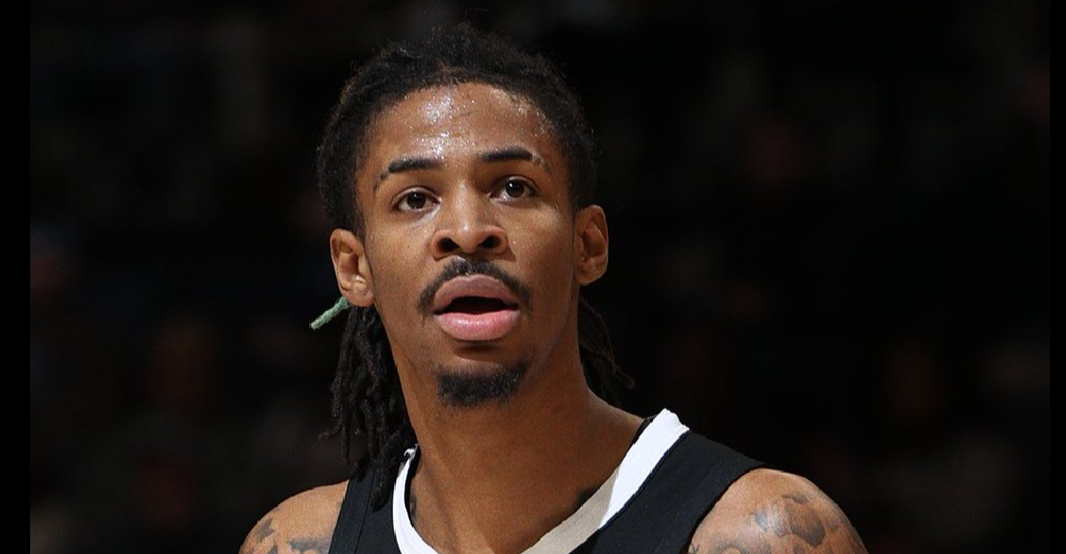Ja Morant’s Memphis Challenge: Exploring the Star’s Lost Joy and What’s Next
Ja Morant, the electrifying guard for the Memphis Grizzlies, appears to be navigating turbulent waters as his recent public comments reveal a struggle with finding joy in his professional journey. Despite his undeniable talent and the team’s hopes pinned on him, Morant’s recent performances and demeanor suggest a more complicated narrative unfolding in Memphis. This article delves into the unfolding situation with Ja Morant, providing new perspectives on his challenges, implications for the Grizzlies, and innovative strategies that could potentially reinvigorate the star’s career and morale.
Morant’s Rocky Patch — Performance Under Pressure
Recent games have showcased a dip in Morant’s usual high-octane style. In a critical match against the Detroit Pistons held at FedExForum, Memphis fell short, and Morant’s numbers did not reflect his usual excellence — he scored 18 points on a 5-of-16 shooting night, coupled with five turnovers. The context here is crucial: this game followed a one-game suspension triggered by concerns over Morant’s effort, notably raising questions about his engagement and focus on the court.
Morant’s reticence in post-game interactions compounds the narrative. His responses to reporters’ questions carry a tone of disengagement — for instance, he acknowledges not having joy while riding the bench and appears guarded when asked about resolution with the coaching staff. This emotional distance from both team and media signals a potential mental and emotional block affecting performance and team dynamics.
The Joy Factor — Why It Matters for Star Athletes
Joy, often simplified as happiness or satisfaction, plays an underappreciated yet pivotal role in athlete performance. For superstars like Morant, joy encompasses the passion for competition, the thrill of execution, camaraderie with teammates, and alignment with coaching philosophies. When any of these components falter, the impact isn’t just on the scoreboard but on the athlete’s holistic game presence.
Drawing parallels with Jimmy Butler’s final days in Miami helps illuminate this issue. Butler’s eventual departure from the Heat was preceded by a visible decline in enjoyment and a sense of dissonance with the team’s directions. Morant’s current situation echoes this pattern — when joy diminishes, frustration with surroundings tends to grow, inevitably steering players toward seeking fresh starts or shifts in scenery.
Fresh Insights: Uncommon Angles on Morant’s Situation
1. The Intersection of Joy and Player-Coach Dynamics
Morant’s cryptic retorts about unresolved issues with the coaching staff hint at deeper relational complexities. Contemporary sports psychology underscores the critical necessity for trust and communication between coaches and elite players. When this foundation weakens, players might disengage mentally even when physically present.
This dynamic invites a more nuanced approach, like integrating external mediators or player development professionals who specialize in mending fractured athlete-coach relationships, beyond traditional coaching methods.
2. Morant’s Public Candidness as a New Form of Player Agency
Traditionally, athletes have managed conflict discreetly; Morant’s ambiguity and guardedness represent an evolving player paradigm—using public platforms to express dissatisfaction without explicit confrontation. This tacit communication compels teams to interpret underlying concerns proactively and engage with players on emotional levels, marking a shift in NBA culture.
This shift could encourage more authentic dialogue but requires coaches and management attuned to subtle communication styles to prevent misconceptions or escalating tensions.
3. The Mental Load of Being a Franchise Cornerstone in Small Markets
Morant isn’t just playing basketball; he’s carrying the hopes of a smaller NBA city in Memphis, where expectations and media scrutiny can feel amplified. Unlike stars in larger markets like New York or Los Angeles, small-market pressure can uniquely weigh on players, blending intense adulation with isolation.
Addressing this mental load involves community and organizational support systems, like enhanced mental health services and localized fan engagement activities aimed at fostering a balanced lifestyle for athletes.
What Does the Future Hold for Ja Morant and Memphis?
The road ahead hinges on several factors: whether Morant and the Grizzlies can bridge the emotional divide, and whether the organization can cultivate an environment conducive to his return to joy and peak performance. Strategic interventions—from coaching adjustments to mental wellness programs—could serve as catalysts.
Furthermore, the potential for trade talks or restructured roles looms on the horizon, common remedies when star players experience disconnects. History offers numerous precedents where mid-season changes reignited careers.
FAQs
Q1: Why is Ja Morant struggling with joy?
Morant’s struggle seems tied to performance pressure, strained relations with coaching staff, and the mental load of leading a small-market team.
Q2: Has Morant’s relationship with the Memphis Grizzlies coaching staff improved?
According to his recent comments, there is no clear resolution yet, suggesting ongoing tension.
Q3: What could bring Morant’s joy back?
Possible solutions include improved communication with coaches, mental health support, and possibly a club environment or role change.
Q4: Is this kind of situation common for NBA stars?
Yes, many NBA stars have faced periods of emotional and performance struggles that sometimes lead to changes in teams.
Q5: Is a trade possible for Morant?
While nothing official is confirmed, trade discussions usually arise when players and teams look for fresh starts in difficult phases.

Sam, a dedicated blogger, has immersed himself in the world of content creation for the past five years. His journey reflects a profound passion for storytelling and insightful commentary. Beyond the digital realm, Sam is a devoted NBA enthusiast, seamlessly blending his love for sports with his writing pursuits.

